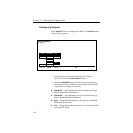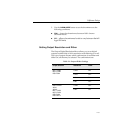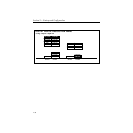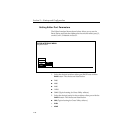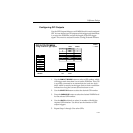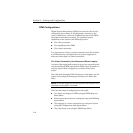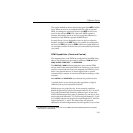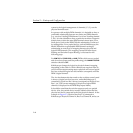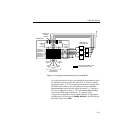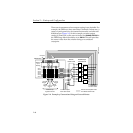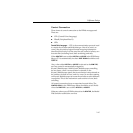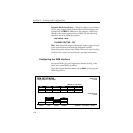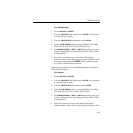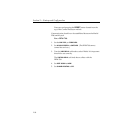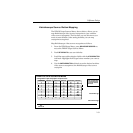
2-44
Section 2— Startup and Configuration
system is the logical arrangement of channels (1, 2, 3), not the
physical channels used.
In systems with multiple DPM channels, it is desirable to have a
predictable relationship between aux buses and DPM channels
(e.g., aux bus 1 feeding DPM channel 1, aux bus 2 feeding channel
2, etc.). It is also desirable to have a particular switcher crosspoint
button always select the same DPM channel return input. For a
fixed device (such as the DPM-700) this relationship is achieved
by cabling alone. For a pooled device, such as Kaleidoscope, the
Model 2200 achieves predictable DPM channel routing by
maintaining an extra level of mapping between physical and
logical DPM channels. This mapping, termed Switcher Input
Routing and Switcher Output Routing, is discussed on the
following page.
For
DPM TYPE of OTHER FIXED or NONE (DPMs which are not pooled
and do not have Input and Output Routing), the CHANNEL ROUTING
selection should be OFF.
Kaleidoscope changes its logical-to-physical channel mapping,
depending on the order in which channels are acquired from its
pool. Switcher output routing maps a physical aux bus to a logical
aux bus so that the logical aux bus number corresponds with the
DPM’s logical channel.
The Aux bus button selection made on the switcher control panel
is always a logical aux bus; however, unless Kaleidoscope is
connected, Logical Aux Bus 1 always corresponds to Physical Aux
Bus 1, etc. (The current mapping of physical-to-logical DPM
channels is displayed in the DPM Map Inputs Menu.)
It should be noted that the switcher supports only one pooled
device. Also, the pooled device must be cabled so that the first
physical aux bus is connected to the first physical channel. In the
example in Figure 2-3, Physical Aux Bus 1 is connected to
Kaleidoscope Physical Channel A, Bus 2 to Channel B, and so on.



